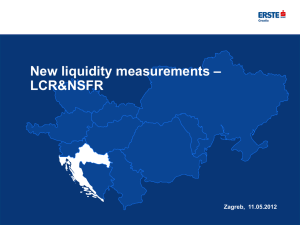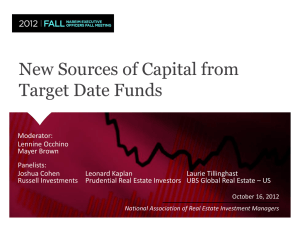Risk Management at Goldman Sachs
advertisement
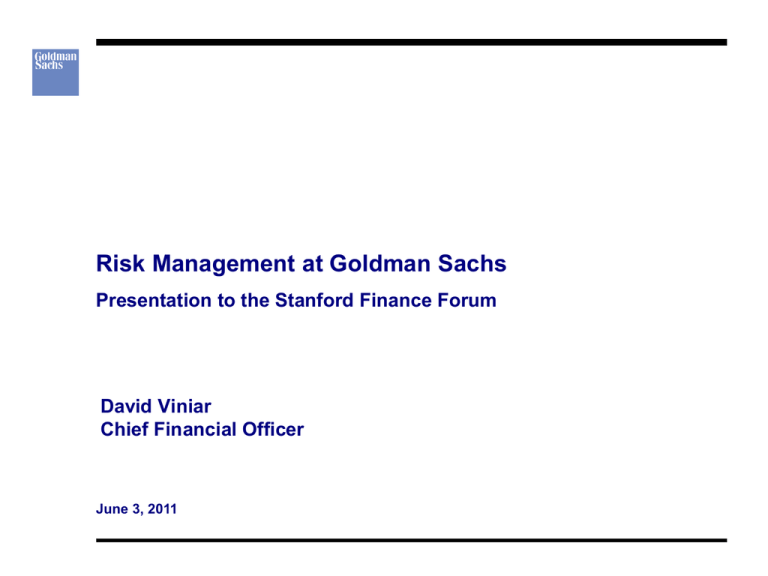
Risk Management at Goldman Sachs Presentation to the Stanford Finance Forum David Viniar Chief Financial Officer June 3, 2011 GS Risk Management Strategy In the business of taking risks Balance our ability to profit from underwriting, market-making, lending and investing activities with our exposure to potential losses — Fully understand the risk; properly price and distribute it; limit down side — Maintain a liquid balance sheet and diversified business risks Key risk exposures — Market — Credit — Operational — Liquidity — Reputational Key elements of risk management — Sophisticated measurement, monitoring and reporting — Pro-active management and mitigation — Conservative capital, funding and liquidity risk management 1 GS Liquidity Risk Management Policies Excess liquidity Asset-liability management Prudent intercompany funding policies Continuing Liquidity Stress Testing and Crisis Planning 2 Excess Liquidity “Global Core Excess” Pre-fund potential stressed cash and collateral needs during a crisis Comprised of cash and highlyliquid, unencumbered securities “Modeled Liquidity Outflow” Debt maturities Disruptions to unsecured and secured financing flows Collateral outflows Can be sold or pledged to generate liquidity Draws on unfunded commitments $168B 1Q11 average Other contractual and contingent cash outflows 3 Funding 1Q11 Unsecured Short-Term: $54bn Secured Funding: $213bn CP 2% Prom Notes 5% WAM >100 days1 Loans 1% Other 10% Secured Debt 11% Equities 13% Hybrid Debt 27% Current LTD 56% Fixed Income 11% Deposits: $39bn Non-U.S. Time 3% Liquid Gov'ts, Agencies, MBS 64% Unsecured Long-Term : $174bn CP 2% WAM ~ 3yrs2 Non-U.S. Demand 13% Prom Notes 5% WAM ~ 7yrs3 Other 10% U.S. Time 18% U.S. Savings 66% 1 Hybrid Debt 27% Does not include trades collateralized by GCE-eligible assets (i.e., “Governments” excludes GCE-eligible government securities). applies to U.S. and non-U.S. time deposits. excludes equity. 2 WAM 3 WAM Current LTD 56% 4 2008 Financial Crisis – Challenges to Balance Sheet and Risk Management Assets became less liquid Asset valuations were impaired More assets moved into Level 3 Bank loan origination inventory was elevated Counterparty credit issues multiplied Volatility spikes increased our risk metrics Liquidity left the firm Funding markets became dislocated — Capacity was reduced, repo haircuts widened — Counterparties were dislocated, funding cost rose 5 Financial Crisis – Perception Became Reality… $250 700bps Lehman Bankruptcy 600bps $200 $150 $100 400bps JPM acquired Bear Stearns 300bps CDS Spread Stock Price 500bps 200bps $50 100bps $0 Jan-2008 0bps Apr-2008 Jul-2008 Oct-2008 Jan-2009 CDS Apr-2009 Jul-2009 Oct-2009 Stock Price 6 Response Became a Bank Holding Company Raised capital from Warren Buffet Generated material new funding and efficiencies Key Takeaways: Liquidity risk management framework largely validated Pro-active measures mitigated risk and yielded substantial new funding Government intervention and programs helped stabilize financial markets 7 Reduced Key Risk Exposures 60 50 $43 $bn 40 30 $27 $22 20 $19 $19 $17 $16 $15 $11 $10 10 $11 $10 $8 $8 $8 $5 $4 $5 $7 $6 $4 0 4Q07 1Q08 2Q08 Lev Loans 3Q08 4Q08 ResRE 3Q09 4Q09 CRE 8 Reduced Assets and Leverage 40.0 x $1,400 1,189 1,200 1,120 1,088 1,046 1,000 913 943 $bn 24.7x 885 27.9x 26.7x 800 35.0 1,082 925 890 882 849 30.0 26.2x 24.5x 24.3x 23.7x 25.0 600 20.0 400 13.7x 200 14.6x 14.2x 13.5x 12.0x 0 15.0 10.0 1Q07 2Q07 3Q07 4Q07 1Q08 2Q08 3Q08 4Q08 1Q09 2Q09 3Q09 4Q09 Total Assets Gross Leverage 9 Made Our Balance Sheet More Liquid 1,200 1,000 800 600 400 200 0 1Q05 2Q05 3Q05 4Q05 1Q06 2Q06 3Q06 4Q06 1Q07 2Q07 Liquid Assets 3Q07 4Q07 1Q08 2Q08 3Q08 4Q08 1Q09 2Q09 3Q09 4Q09 Less Liquid Assets 10 Grew our Excess Liquidity Average Global Core Excess ($bn) $171 $164 $113 $111 3Q08 4Q08 $167 $163 $88 $61 1Q08 2Q08 1Q09 2Q09 3Q09 4Q09 11 Key Lessons Learned 1. Liquidity and funding are key to life 2. Be creative when identifying potential liquidity outflows 3. Adequate capital does not mean adequate liquidity 4. Size is important – of firms and of specific risk positions 5. “Tail risk” is problematic 6. Good risk management processes do not equal good risk management 12



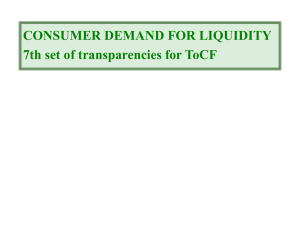


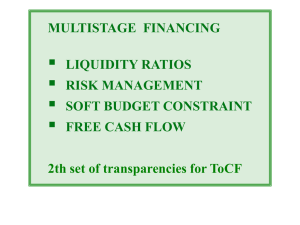
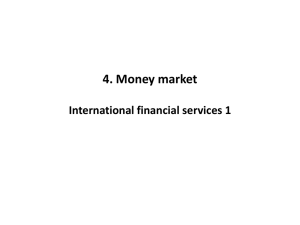
![IRE [Memo]](http://s3.studylib.net/store/data/007356460_1-1fb99c49c428cbd7ce1671692c64b21f-300x300.png)
